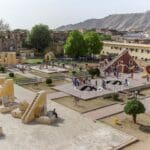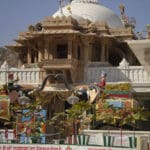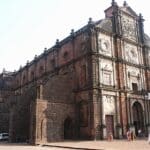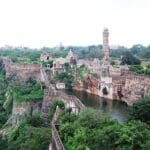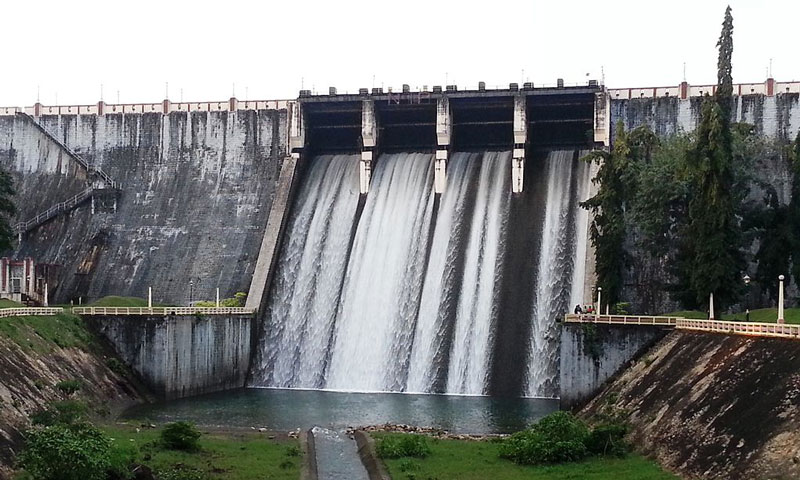Welcome to Valmiki National Park, a pristine wilderness sanctuary nestled in the verdant landscapes of Bihar, India. Spanning an expansive area of 880 square kilometers, this national park is a haven for nature enthusiasts and wildlife aficionados alike. Established in 1989, Valmiki National Park takes its name from the revered sage Valmiki, author of the ancient Indian epic, the Ramayana. It stands as one of the oldest and most significant national parks in Bihar, boasting a rich tapestry of biodiversity and natural beauty.
Places to Visit in Valmiki National Park
Wildlife Safari
Embark on a thrilling wildlife safari through the heart of Valmiki National Park to witness its diverse array of flora and fauna. Traverse the rugged terrain aboard a safari vehicle or elephant back and encounter magnificent creatures such as tigers, leopards, elephants, deer, and a plethora of avian species in their natural habitat. The park’s dense forests, grasslands, and wetlands provide the perfect setting for unforgettable wildlife encounters and photography opportunities.
Valmiki Ashram
Immerse yourself in spirituality and tranquility at the historic Valmiki Ashram, believed to be the abode of Sage Valmiki during ancient times. Surrounded by lush greenery and serene surroundings, the ashram offers a peaceful retreat for pilgrims and seekers alike. Explore the sacred grounds, visit the temple dedicated to Sage Valmiki, and partake in meditation and introspection amidst the serene ambiance of this revered site.
Someshwar Fort
Journey back in time as you explore the ancient Someshwar Fort, a majestic stronghold perched atop a hill overlooking the picturesque Gandak River. Dating back to the 10th century, this architectural marvel offers panoramic views of the surrounding landscapes and serves as a testament to the region’s rich cultural heritage. Explore the fort’s imposing ramparts, intricate carvings, and hidden chambers as you unravel its storied past and architectural grandeur.
Things to Do in Valmiki National Park
Birdwatching
Delight in the captivating activity of birdwatching amidst the lush forests and wetlands of Valmiki National Park. With over 250 avian species recorded within its boundaries, including the majestic Sarus Crane and the elusive Great Indian Hornbill, the park offers a paradise for bird enthusiasts and photographers. Set out on guided birding tours or explore the park’s designated birdwatching trails to witness the vibrant avian diversity that calls Valmiki home.
Nature Trails
Embark on a journey of exploration and discovery along the park’s scenic nature trails, which wind their way through dense forests, meadows, and riverbanks. Whether you’re a seasoned trekker or a casual nature lover, these well-marked trails offer a unique opportunity to immerse yourself in the sights, sounds, and scents of the wilderness. Keep an eye out for wildlife sightings, colorful butterflies, and indigenous flora as you wander through the untamed beauty of Valmiki National Park.
Tribal Village Visits
Gain insight into the rich cultural heritage and traditional way of life of the region by visiting the tribal villages scattered around Valmiki National Park. Interact with the indigenous communities, learn about their customs, rituals, and handicrafts, and experience the warmth and hospitality of rural Bihar firsthand. Witness traditional dance performances, sample local delicacies, and immerse yourself in the vibrant tapestry of tribal culture that thrives amidst the natural splendor of Valmiki.
Climatic Conditions and Best Time to Visit
Valmiki National Park experiences a tropical monsoon climate, characterized by hot summers, mild winters, and heavy rainfall during the monsoon season. The best time to visit the park is during the winter months from November to February, when the weather is cool and pleasant, and wildlife sightings are at their peak. Avoid visiting during the monsoon season from July to September, as heavy rains may disrupt travel plans and wildlife activities.
How to Reach Valmiki National Park
By Air
The nearest airport to Valmiki National Park is the Lok Nayak Jayaprakash Airport in Patna, located approximately 275 kilometers away. From the airport, visitors can avail of taxis or private transport services to reach the park, with a journey time of around 6-7 hours.
By Rail
For those traveling by train, the nearest railway station to Valmiki National Park is Valmiki Nagar Railway Station, situated just 5 kilometers from the park’s entrance. Regular trains connect Valmiki Nagar with major cities such as Patna, Muzaffarpur, and Bettiah, making it a convenient mode of transportation for visitors.
By Road
Valmiki National Park is well-connected by a network of highways and roads, with regular bus services available from nearby cities such as Patna, Bettiah, and Muzaffarpur. Private taxis, rental cars, and self-drive options are also available for those traveling by road, providing flexibility and convenience for exploring the park at your own pace.
History of Valmiki National Park
Originally established as a wildlife sanctuary in 1978, Valmiki National Park was later upgraded to a national park in 1989 to protect its unique ecosystem and biodiversity. Over the years, the park has played a pivotal role in conservation efforts, focusing on habitat restoration, wildlife protection, and community engagement initiatives. Today, it stands as a beacon of conservation success and serves as a vital refuge for endangered species and habitats in Bihar.
Food in Valmiki National Park
Savor the authentic flavors of Bihari cuisine during your visit to Valmiki National Park, with a diverse range of culinary delights to tantalize your taste buds. Indulge in local specialties such as litti chokha, sattu paratha, chana ghugni, and makhana kheer, prepared using fresh, locally sourced ingredients and traditional cooking techniques. Whether you’re dining at a roadside eatery, a forest rest house, or a tribal village homestay, the vibrant flavors and aromatic spices of Bihari cuisine are sure to leave a lasting impression.
Accessibility and Accommodation
Accommodation Options
Valmiki National Park offers a range of accommodation options to suit every budget and preference, ranging from forest rest houses and eco-resorts to camping sites and homestays. These accommodations provide a comfortable and immersive stay amidst the natural beauty of the park, with facilities such as cozy rooms, delicious meals, and guided nature walks available to enhance your experience.
Accessibility
The park is accessible to visitors of all ages and abilities, with well-maintained roads, pathways, and signage throughout its premises. Barrier-free access and wheelchair-friendly facilities ensure that everyone can enjoy the park’s attractions and amenities, including wildlife safaris, nature trails, and cultural experiences. Additionally, trained guides and park staff are available to assist visitors and provide information about the park’s facilities, activities, and safety guidelines.
Nearby Hotels and Restaurants
Hotels
- Valmiki Tiger Reserve Rest House: Located within the park premises, this forest rest house offers comfortable accommodation amidst the wilderness, with spacious rooms, scenic views, and basic amenities available for guests.
- Wild Woods Resort: Nestled on the outskirts of the park, this eco-resort provides a tranquil retreat for nature lovers, with rustic cottages, lush gardens, and eco-friendly practices aimed at minimizing environmental impact.
- River View Retreat: Situated along the banks of the Gandak River, this riverside resort offers panoramic views of the surrounding landscapes, with spacious tents, modern amenities, and outdoor dining facilities available for guests.
Restaurants
- Tiger’s Den Restaurant: Located near the park entrance, this cozy eatery serves a variety of vegetarian and non-vegetarian dishes inspired by local flavors and ingredients, with outdoor seating and scenic views of the surrounding forests.
- Jungle Cafe: Tucked away amidst the wilderness, this rustic cafe offers a unique dining experience amidst nature, with organic ingredients, traditional recipes, and live music performances creating a memorable ambiance for guests.
- Gandak View Dhaba: Situated along the highway leading to the park, this roadside dhaba specializes in regional delicacies such as dal bati churma, aloo paratha, and mutton curry, served with warm hospitality and authentic flavors that reflect the culinary heritage of Bihar.
Tourist Map of Valmiki National Park
[Insert Tourist Map of Valmiki National Park]
Distance From Major Cities
- Patna: 275 kilometers
- Bettiah: 90 kilometers
- Muzaffarpur: 190 kilometers
Nearest Airport
Lok Nayak Jayaprakash Airport, Patna
Nearby Places of Interest
- Gandak Barrage: A marvel of engineering located on the Gandak River, offering scenic views, boating opportunities, and a serene ambiance for picnics and leisure activities.
- Balmiki Mandir: A sacred temple dedicated to Sage Valmiki, located near the park entrance, frequented by pilgrims and devotees seeking blessings and spiritual solace.
- Riverside Picnic Spots: Scenic spots along the banks of the Gandak River, offering idyllic settings for picnics, leisurely walks, and nature photography amidst the tranquil beauty of the riverine landscapes.
Tourist Attractions in Valmiki National Park
- Wildlife Safari: Explore the park’s diverse ecosystems and encounter its majestic inhabitants on an exhilarating wildlife safari.
- Valmiki Ashram: Visit the historic ashram of Sage Valmiki and experience the serenity and spirituality of this revered site.
- Someshwar Fort: Discover the ancient fort atop a hill overlooking the Gandak River, offering panoramic views and insights into the region’s rich cultural heritage.
- Birdwatching: Delight in the vibrant avian diversity of Valmiki National Park, with over 250 bird species to be spotted amidst its lush forests and wetlands.
- Nature Trails: Embark on scenic nature trails to immerse yourself in the sights and sounds of the wilderness, with opportunities for wildlife sightings and photography.
- Tribal Village Visits: Gain insight into the cultural heritage of the region by visiting tribal villages, interacting with indigenous communities, and experiencing traditional dance performances and culinary delights.
Conclusion
Valmiki National Park, with its diverse wildlife, rich cultural heritage, and breathtaking landscapes, offers a truly immersive and unforgettable experience for visitors. Whether you’re exploring its pristine forests, encountering majestic creatures on a wildlife safari, or delving into its ancient history and traditions, Valmiki National Park captivates the senses and leaves a lasting impression on all who visit.
Plan your next adventure to Valmiki National Park and immerse yourself in the beauty and wonder of this natural paradise. From thrilling wildlife encounters to tranquil moments of reflection, Valmiki offers something for every traveler seeking to connect with nature and experience the essence of Bihar’s wilderness.
Frequently Asked Questions (FAQs)
1. What are the entry timings for Valmiki National Park?
- The entry timings for Valmiki National Park are from sunrise to sunset. Visitors are advised to check the official park website or inquire locally for the latest information on entry timings and regulations.
2. Are there any accommodation options available inside Valmiki National Park?
- Yes, Valmiki National Park offers a range of accommodation options including forest rest houses, eco-resorts, and camping sites. Visitors can choose from various lodging options based on their preferences and budget.
3. Can I bring my own vehicle inside the park?
- Private vehicles are not allowed inside Valmiki National Park. Visitors can avail of safari vehicles or guided tours organized by the park authorities to explore the wilderness and wildlife habitats.
4. Are there any restrictions on photography inside the park?
- While photography is allowed inside Valmiki National Park, visitors are advised to follow guidelines and regulations set by the park authorities. Avoid disturbing wildlife or trespassing into restricted areas for the safety of both visitors and wildlife.
5. Is Valmiki National Park suitable for family outings?
- Yes, Valmiki National Park is suitable for family outings, with activities and attractions catering to visitors of all ages. Families can enjoy wildlife safaris, nature trails, picnic spots, and cultural experiences amidst the natural beauty of the park.
6. What is the best time of year to visit Valmiki National Park?
- The best time to visit Valmiki National Park is during the winter months from November to February when the weather is cool and pleasant, and wildlife sightings are at their peak. Avoid visiting during the monsoon season from July to September due to heavy rainfall.
7. Are there any guided tours available in Valmiki National Park?
- Yes, guided tours are available in Valmiki National Park, conducted by trained naturalists and park guides. These tours offer visitors insights into the park’s flora, fauna, and cultural heritage, enhancing the overall visitor experience.
8. What precautions should I take while exploring Valmiki National Park?
- Visitors are advised to follow safety guidelines and precautions while exploring Valmiki National Park. Stay on designated trails, avoid feeding or approaching wild animals, carry sufficient water and snacks, and adhere to park rules and regulations for a safe and enjoyable visit.
9. Can I visit Valmiki National Park during the COVID-19 pandemic?
- It is essential to check the latest travel advisories and guidelines issued by local authorities and health organizations before planning a visit to Valmiki National Park during the COVID-19 pandemic. Follow safety protocols such as wearing masks, practicing social distancing, and maintaining hygiene to ensure a safe and responsible visit.
10. How can I book accommodations and safari tours in Valmiki National Park?
- Accommodations and safari tours in Valmiki National Park can be booked online through the official park website or through authorized travel agents and tour operators. It is advisable to book in advance, especially during peak tourist seasons, to secure preferred accommodations and tour slots.






